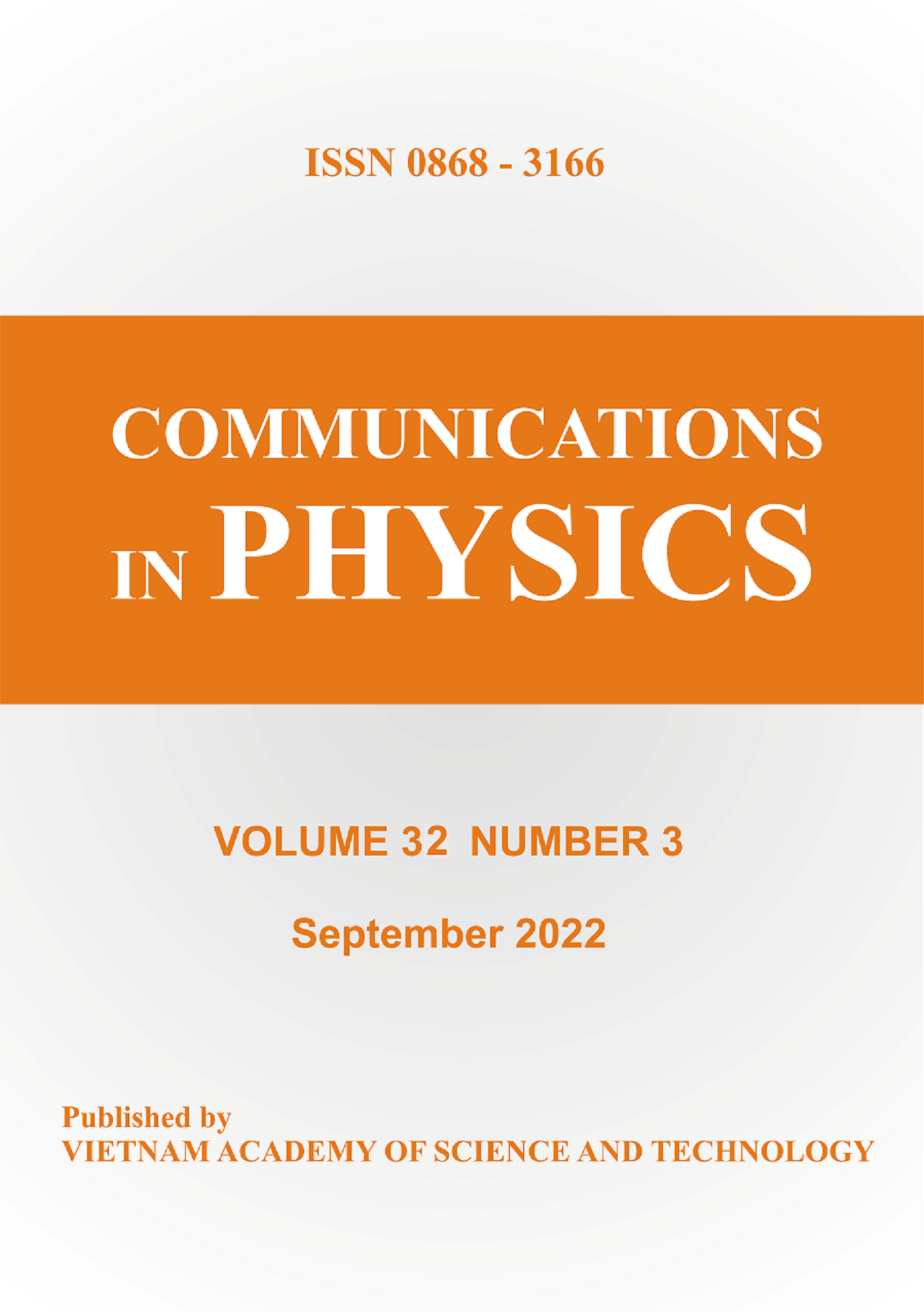Depolarization Property of Cirrus Clouds Over Hanoi
Author affiliations
DOI:
https://doi.org/10.15625/0868-3166/27/4/10836Keywords:
lidar, atmosphere, depolarizationAbstract
Cirrus cloud is one of the most commonly occurring cloud types globally. The clouds are found mainly to consist of floating ice crystals, which can reflect strongly incoming radiation. Lidar measurements provide an opportunity to study the microphysics and ice compositions of cirrus clouds. We have developed a polarization lidar system to measure the depolarization characteristics of the lower atmosphere over Hanoi. From our measurements of cirrus clouds over the period from 2010 to 2012, the depolarization ratio of cirrus clouds is found to be very high ranging from 20% up to 80{\%}, indicating large fraction of backscattering from ice crystals. We find a trend of increasing depolarization ratio with height and decreasing temperature. We also compare our lidar measurements with other results obtained by lidar technique in other regions of the world.Downloads
Metrics
References
Liou, K.N., 1986. Influence of cirrus clouds on weather and climate processes: a global perspective. Mon. Wea. Rev. 114,1167-1199.
DOI: https://doi.org/10.1175/1520-0493(1986)114<1167:IOCCOW>2.0.CO;2
![]()
Seifert P., Ansmann A., et al, 2007. Cirrus optical properties observed with lidar system, radiosonde, and satellite over the tropical Indian Ocean during the aerosol-polluted northeast and clean maritime southwest monsoon. J. Geophys. Res. 112, D17205.doi:10.1029/2006JD008352.
DOI: https://doi.org/10.1029/2006JD008352
![]()
Beyerle, J., Schafer, H.-J., Neuber, R., Schrems, O., Macdemid, I.S., 1998. Dual wavelength lidar system observation of tropical high-altitude cirrus clouds during the ALBATROSS 1996 campaign. Geophys. Res. Lett. 25, 919-922.
DOI: https://doi.org/10.1029/98GL00491
![]()
Bischoff, S.A., Canziani, P.O., Yuchechen, A.E., 2007. The tropopause at southern extratropical latitudes: Argentina operational rawinsonde climatology. Int. J. Climatol. 27, 189-209.
DOI: https://doi.org/10.1002/joc.1385
![]()
Measures, R.M., 1992, Laser remote sensing, Wiley-Interscience
![]()
Nguyen Xuan Tuan, Dinh Van Trung, Dao Duy Thang, Bui Van Hai (2011), Gated – photomultiplier tube for uses in lidar to study the upper atmosphere, The Second Academic Conference On Natural Science For Master And Phd Students From Cambodia, Laos, Malaysia & Vietnam, Publish House for Science and Technology, ISBN: 978-604-913-088-5, 393-396.
![]()
Bui Van Hai, Dinh Van Trung, Nguyen Xuan Tuan, Dao Duy Thang and Nguyen Thanh Binh (2012), monitoring cirrus clouds and tropopause height over hanoi using a compact lidar system, Communication in Physics, ISSN 0868-3166, 22(4), 357-364.
DOI: https://doi.org/10.15625/0868-3166/22/4/2488
![]()
Wei-Nai Chen, Chih-Wei chiang and Jan Bai Nee, Lidar Ratio and depolarization Ratio for Cirrus clouds, Applied Optics, November 2002, DOI. 10.1364/AO.41.006470.
DOI: https://doi.org/10.1364/AO.41.006470
![]()
Min Min and et al, Cirrus Cloud Macrophysical and Optical Properites over North China from CALIOP Measurements, Advances in Atmospheric Sciences, May 2011, DOI: 10.1007/s00376-010-0049-5.
DOI: https://doi.org/10.1007/s00376-010-0049-5
![]()
Sivakumar, V., Bhavanikumar, Y., Rao, P.B., Mizutani, K., Aoki, T., Yasui, M., Itabe, T., 2003, Lidar observed characteristics of the tropical cirrus clouds, Radio Science vol. 38, doi:10.1029/2002RS002719.
DOI: https://doi.org/10.1029/2002RS002719
![]()
Sassen, K. Benson, S. 2001, a midlattitude cirrus cloud climatology from the facility for atmostpheric remote sensing part II. Microphysical properties derived from lidar depolarization, vol. 58, 2013.
DOI: https://doi.org/10.1175/1520-0469(2001)058<2103:AMCCCF>2.0.CO;2
![]()
Downloads
Published
How to Cite
Issue
Section
License
Authors who publish with CIP agree with the following terms:- The manuscript is not under consideration for publication elsewhere. When a manuscript is accepted for publication, the author agrees to automatic transfer of the copyright to the editorial office.
- The manuscript should not be published elsewhere in any language without the consent of the copyright holders. Authors have the right to enter into separate, additional contractual arrangements for the non-exclusive distribution of the journal’s published version of their work (e.g., post it to an institutional repository or publish it in a book), with an acknowledgement of its initial publication in this journal.
- Authors are encouraged to post their work online (e.g., in institutional repositories or on their websites) prior to or during the submission process, as it can lead to productive exchanges or/and greater number of citation to the to-be-published work (See The Effect of Open Access).
Accepted 30-11-2017
Published 15-12-2017













